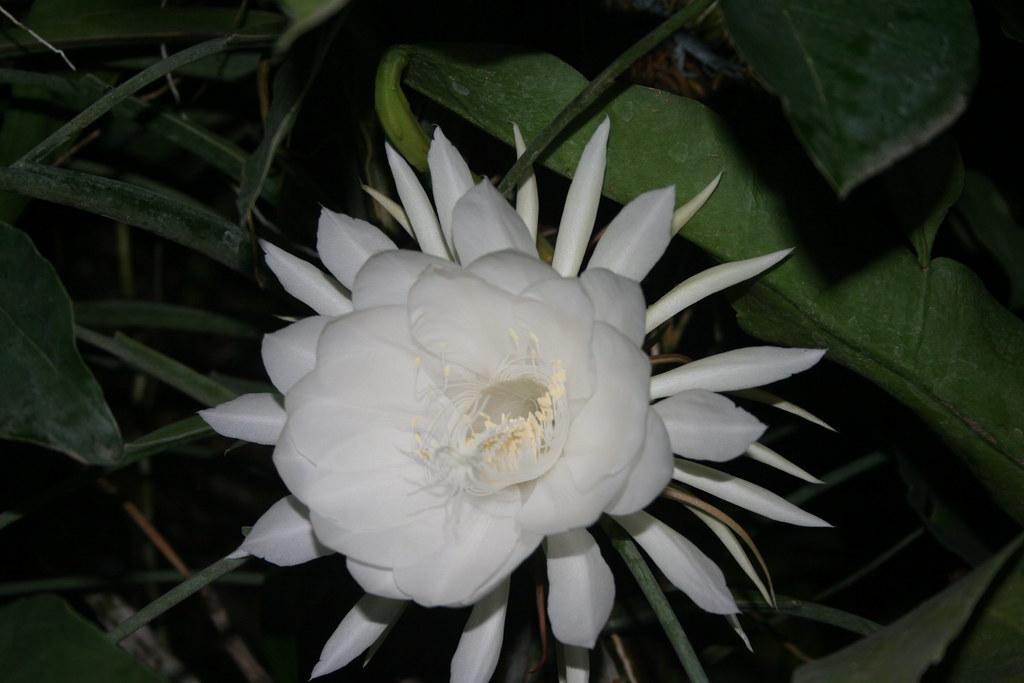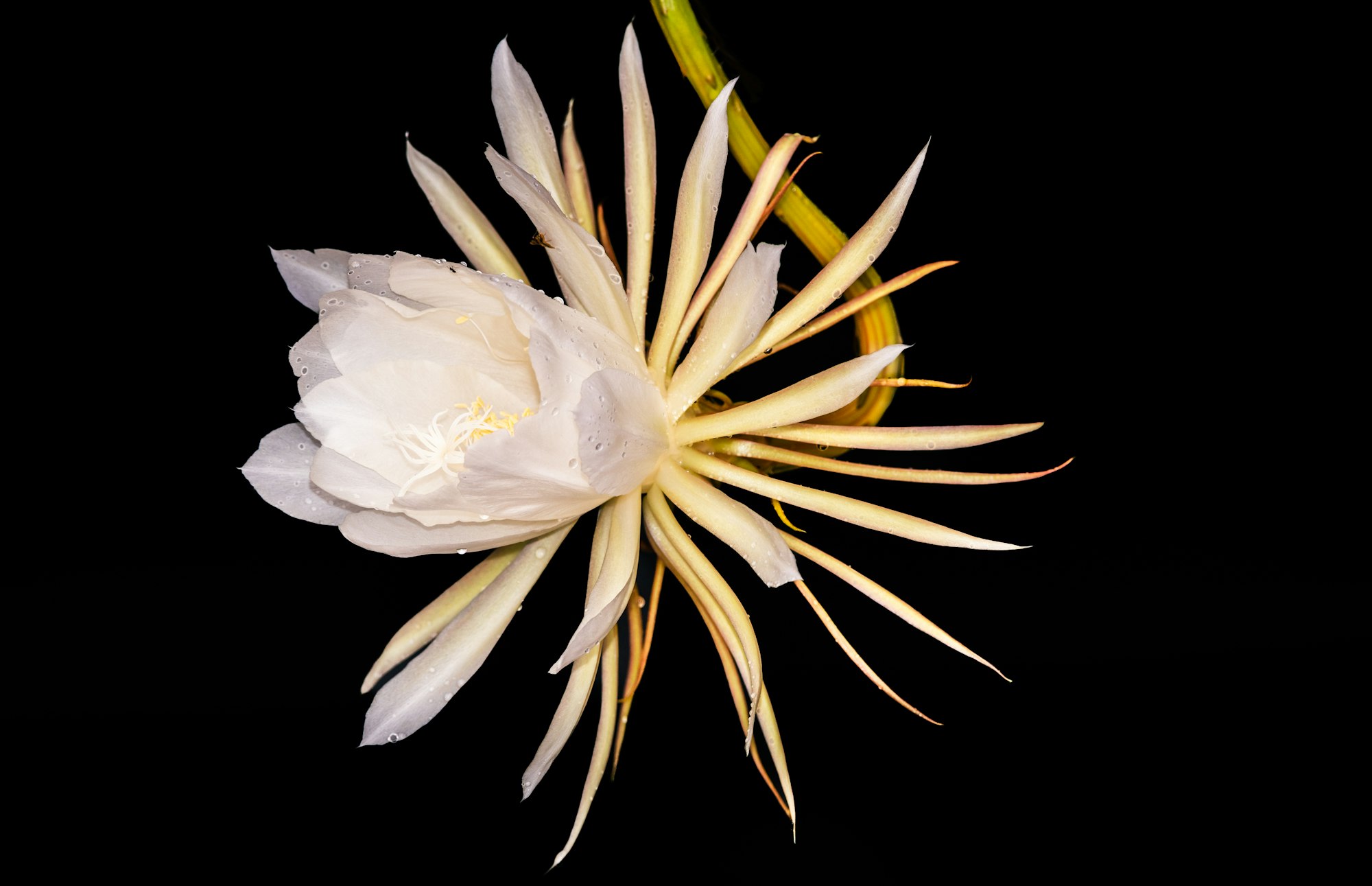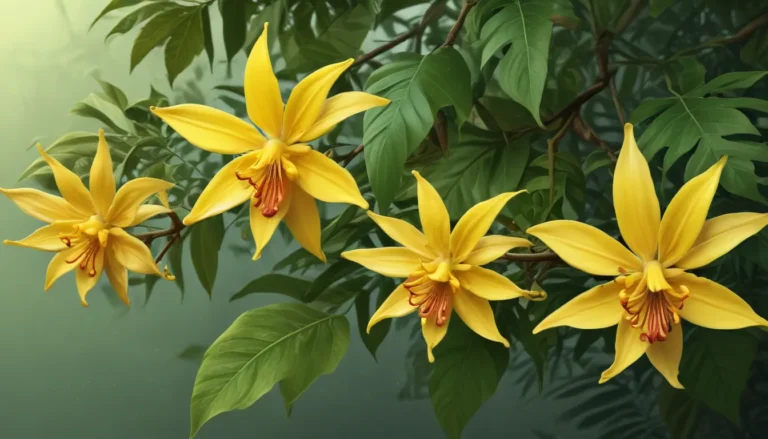The pictures we use in our articles might not show exactly what the words say. We choose these pictures to make you interested in reading more. The pictures work together with the words but don’t take their place. The words still tell you the important facts.
Introduction
The Queen of the Night flower, scientifically known as Epiphyllum oxypetalum, is a captivating marvel of the plant world. This enchanting bloom, with its nocturnal habits and fleeting beauty, has fascinated gardeners and botanists alike for generations. Native to the lush tropical forests of Central and South America, this unique member of the cactus family has earned its regal title through its stunning appearance and intriguing characteristics.
In this comprehensive guide, we'll delve deep into the world of the Queen of the Night flower, uncovering its secrets, exploring its cultural significance, and providing essential care tips for those lucky enough to cultivate this botanical gem. Whether you're a seasoned horticulturist or a curious nature enthusiast, prepare to be amazed by the wonders of this nocturnal beauty.
Key Takeaways
- The Queen of the Night flower blooms exclusively at night, once a year
- It belongs to the cactus family despite its delicate appearance
- The flower emits a sweet fragrance to attract nocturnal pollinators
- It's an epiphyte, often growing on other plants for support
- The plant can grow up to 10 feet tall and is non-toxic
Fascinating Facts About the Queen of the Night Flower

1. Nocturnal Blooming Beauty
The Queen of the Night flower is renowned for its nocturnal blooming habit. This remarkable plant unfurls its majestic blossoms as the sun sets, creating a breathtaking spectacle that lasts only until dawn. This unique characteristic adds an air of mystery and exclusivity to the flower, making it a prized possession for night garden enthusiasts.
2. Annual Flowering Event
Unlike many plants that bloom throughout the growing season, the Queen of the Night flower treats us to its beauty only once a year. This annual blooming event is highly anticipated by plant lovers, who often gather to witness the magical unfolding of its petals under the moonlight.
3. Fragrant Night Air
When the Queen of the Night flower opens, it releases a sweet, intoxicating fragrance that perfumes the night air. This scent serves a crucial purpose in the plant's life cycle, attracting nocturnal pollinators like moths to ensure its reproduction.
4. Cactus in Disguise
Despite its delicate and flower-like appearance, the Queen of the Night is actually a member of the cactus family (Cactaceae). This surprising fact showcases the incredible diversity within the cactus family and challenges our perceptions of what a cactus can look like.
5. Nocturnal Pollination Partners
The Queen of the Night flower has evolved to rely on nocturnal animals, particularly moths, for pollination. Its nighttime blooming, coupled with its fragrant aroma, is perfectly adapted to attract these important nighttime visitors.
6. Tropical Forest Native
Originating from the lush landscapes of Central and South America, the Queen of the Night flower thrives in tropical forest environments. This native habitat influences its care requirements and optimal growing conditions.
7. Epiphytic Lifestyle
In its natural habitat, the Queen of the Night flower often adopts an epiphytic lifestyle, growing on other plants for support. This adaptation allows it to reach towards light sources in dense forest canopies.
8. Impressive Growth Potential
With proper care, the Queen of the Night plant can reach impressive heights of up to 10 feet. Its long, slender stems are not just for show – they're cleverly modified to store water, an adaptation that helps the plant survive in its native environment.
9. Cultural Significance
The Queen of the Night flower holds deep symbolic meaning in various cultures. Often associated with concepts of beauty, mystery, and the ephemeral nature of life, this flower has inspired art, literature, and spiritual practices around the world.
10. Specific Care Needs
While not overly demanding, the Queen of the Night flower does have specific care requirements to thrive. It prefers partial shade, well-draining soil, and consistent watering. Understanding these needs is crucial for successfully cultivating this extraordinary plant.
11. Pet-Friendly Plant
Good news for animal lovers: the Queen of the Night flower is non-toxic. This makes it a safe choice for homes with curious pets or young children, allowing you to enjoy its beauty without worry.
Frequently Asked Questions About the Queen of the Night Flower
How often does the Queen of the Night flower bloom?
The Queen of the Night flower typically blooms only once a year, making each blooming event a special occasion.
Can I grow a Queen of the Night flower indoors?
Yes, with proper care and conditions, you can successfully grow a Queen of the Night plant indoors. Ensure it receives indirect light and maintain proper humidity levels.
How long do the Queen of the Night flowers last?
The Queen of the Night flowers are ephemeral, lasting only for a single night. They usually open in the evening and wilt before dawn.
Is the Queen of the Night flower difficult to care for?
While it has specific needs, the Queen of the Night flower is not particularly difficult to care for. It requires well-draining soil, partial shade, and regular watering.
Why is it called the Queen of the Night?
The name "Queen of the Night" comes from its majestic nocturnal blooming habit and the regal appearance of its large, white flowers.
Conclusion
The Queen of the Night flower stands as a testament to the wonders of the natural world. Its unique nocturnal blooming, annual flowering event, and captivating fragrance make it a true gem in the plant kingdom. From its surprising cactus lineage to its epiphytic nature, this remarkable plant continues to fascinate and inspire plant enthusiasts around the globe.
As we've explored the many facets of the Queen of the Night flower, from its cultural significance to its specific care needs, it's clear that this plant offers much more than just visual beauty. It provides a glimpse into the intricate relationships between plants and their pollinators, showcases the diverse adaptations within the cactus family, and reminds us of the fleeting nature of beauty in the natural world.






